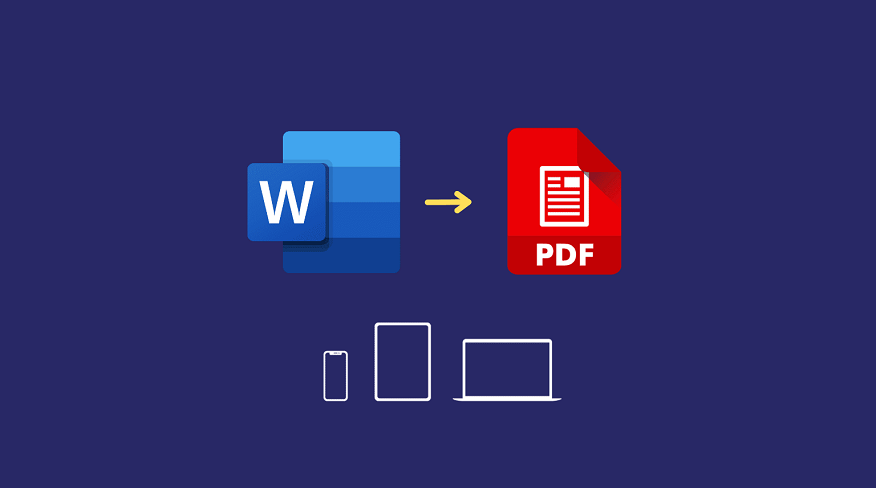In our rapidly evolving digital landscape, mobile document management applications have emerged as indispensable tools for individuals and businesses alike. This exploration delves into the pivotal role of compression technologies within these apps, specifically addressing the seamless transition from Word to PDF compression. By enhancing efficiency, these apps empower users to organize and share documents on the go, transforming the way we manage information in our mobile-centric world.

The Foundation: Compression from Word to PDF
The foundation of efficient mobile document management lies in the seamless transition from Word to PDF compression. This critical process optimizes document portability, ensuring quick accessibility on mobile platforms and setting the stage for enhanced efficiency within mobile document management applications. In this section, we explore the pivotal role played by compression technologies in streamlining the organization and sharing of documents on the go.
Optimizing Document Portability
At the core of mobile document management is the optimization of document portability. Compression technologies, particularly in the conversion from Word to PDF, play a crucial role in reducing file sizes without compromising content integrity. This optimization ensures that documents are easily transferable and accessible on mobile devices with varying storage capacities.
Quick Accessibility on Mobile Platforms
Compression facilitates quick accessibility of documents on mobile platforms. By converting Word documents to compressed PDFs, users can swiftly load and view files, ensuring that critical information is readily available, even in environments with limited network connectivity.
Leveraging Compression for Efficient Organization
Leveraging compression technologies for efficient organization forms a cornerstone in the evolution of mobile document management. In this section, we delve into how compression, beyond optimizing storage space, becomes a powerful tool for categorizing, tagging, and ensuring the swift retrieval of documents within mobile document management applications. This strategic use of compression not only enhances organizational capabilities but also transforms the user experience in managing documents on mobile devices.
Space-Efficient Storage
Mobile devices often contend with limited storage space. Compression technologies enable users to store a larger volume of documents on their devices without exhausting storage capacities. This space efficiency is particularly beneficial for users managing extensive document libraries on their mobile devices.
Categorized and Searchable Content
Mobile document management apps leverage compression not only for storage optimization but also for efficient organization. Compressed documents can be categorized, tagged, and easily searchable, allowing users to swiftly locate the information they need, whether it’s a critical business report or a personal memo.
Simplifying Collaboration on the Go
Simplifying collaboration on the go is a pivotal aspect of modern mobile document management, and compression technologies play a crucial role in achieving this efficiency. In this section, we explore how compression contributes to reducing bandwidth consumption and enhancing real-time collaboration features within mobile document management applications, fostering seamless and effective collaboration regardless of the user’s location.
Reduced Bandwidth Consumption
Compression technologies contribute to reduced bandwidth consumption, a critical factor in mobile collaboration. When sharing documents through mobile document management apps, compressed files reduce the time and data required for uploads and downloads, facilitating smoother collaboration even in low-bandwidth environments.
Real-Time Collaboration Features
Many mobile document management apps integrate real-time collaboration features, made more efficient through compression. Users can collaborate on compressed documents simultaneously, fostering a seamless exchange of ideas and edits regardless of physical location.
Overcoming Challenges in Mobile Document Management
Overcoming challenges in mobile document management is a crucial endeavor to ensure the seamless and secure handling of information on portable devices. In this section, we explore the hurdles associated with balancing compression and document quality, as well as the imperative considerations regarding the security of compressed documents in the mobile document management landscape. Addressing these challenges is essential to enhance the overall efficiency and reliability of mobile document management applications.
Balancing Compression and Document Quality
One challenge in mobile document management lies in balancing compression and document quality. Striking the right balance ensures that compressed documents maintain their readability and visual integrity, addressing concerns related to the potential loss of essential details.
Security Considerations
As mobile document management involves the exchange of potentially sensitive information, security considerations are paramount. Compression should be implemented without compromising document security, ensuring that confidential data remains protected during transfers and collaborations.
Future Innovations: What Lies Ahead
Future Innovations: What Lies Ahead” anticipates the transformative developments that will shape the landscape of mobile document management. In this section, we explore the integration of artificial intelligence in compression algorithms and the potential enhancements brought about by augmented reality features. These forward-looking innovations hold the promise of further revolutionizing how users interact with compressed documents, making the future of mobile document management even more dynamic and immersive.
Integration of AI in Compression Algorithms
The future of mobile document management will likely witness the integration of artificial intelligence (AI) in compression algorithms. AI can adapt compression techniques based on user behavior, optimizing document storage and retrieval processes to align with individual preferences and usage patterns.
Enhanced Augmented Reality (AR) Features
As mobile devices become more advanced, the integration of augmented reality (AR) features in document management apps is anticipated. Users may interact with compressed documents in innovative ways, such as virtual annotations or dynamic visualizations, enhancing the overall mobile document management experience.
Conclusion
In conclusion, mobile document management apps, fortified by compression technologies, represent a transformative force in how we handle and share information in our mobile-centric world. By seamlessly compressing documents from Word to PDF, these apps enhance efficiency, streamline organization, and facilitate collaboration on the go. As technology continues to advance, the future promises even more innovative features, making mobile document management an integral part of our daily routines and professional endeavors.









Leave a Reply
You must be logged in to post a comment.